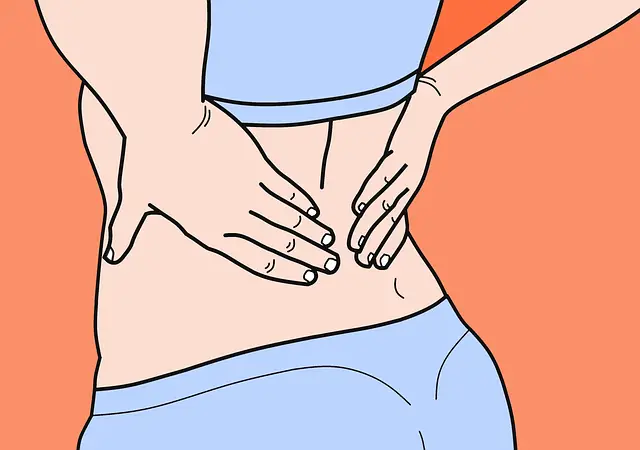Chronic back pain can be caused by numerous factors, having to know what it is about espondilosis dorsal y cervical. Below we will explain both its symptoms and the causes and treatment, so that you can know in depth what this health problem is about.
Index
What is spondylosis
The spondylosis cannot be considered a disease in itself, but it is a generic expression that is used to refer to different conditions that can cause pain in the back area of people.
In general, the term spondylosis is used to describe any type of degeneration that occurs in the spine. It is a degeneration that is closely linked to the wear and tear suffered by the spine over time., so it is not surprising that it affects more than 85% to people who are older than 60 years.
Depending on the part of the back that is affected, different types of spondylosis.
Espondilosis dorsal
When we talk about dorsal or thoracic spondylosis we find the least frequent of all types of spondylosis (lumbar, cervical and thoracic). In this case, it affects the vertebrae that are located in the central area of the spine.. As it is the area of the spine that has less flexion, it has wear that is much lighter with respect to the other lumbar and cervical regions; and it is that these are the ones in charge of supporting and giving flexibility and movement to the spine.
Causes of spondylosis
The causes of spondylosis come mostly from the passage of time itself, that is to say, of the aging of the person and the gradual wear that the bones of the spine suffer over the years.
In this sense, The main effects of degeneration that we can find for those who suffer from it are the following::
- wear of the intervertebral discs. The spinal discs are like small pads that are located between the bones. As the years go by, these discs begin to suffer wear and tear that can cause the vertebrae to touch each other, generating pain, swelling and other problems.
- excessive bone growth. Bone spurs are very common among those who are elderly and can cause pressure to be generated on the nerves that run through the spine.
- herniated disc. It is the natural wear suffered by the intervertebral discs, that it is normal that they can produce both fractures and tears that can affect a nearby nerve. They occur more frequently in the case of the lower back, although they can also occur in the cervical region.
- ligament stiffness. Over the years, these tend to degenerate and harden, causing you to lose flexibility.
- Deformation in the facet joints. There is a loss of joint cartilage due to friction of the vertebrae, causing abnormal bone growths to form (osteophytes).
Spondylosis risk factors
In addition to the common causes that affect people due to aging, there are certain risk factors that can contribute to the development of the conditions that have been mentioned, among which we must highlight the following:
- Injuries. Any prior injury a person has sustained to the spine can put them at increased risk of injury.
- hereditary factors. Genetics is a factor that can influence the development of malformations or diseases of the spine.
- Lifestyle: Both diet and exercise are essential for maintaining a healthy skeletal system., so smoking, lack of minerals and vitamins and a sedentary lifestyle can help contribute to spinal problems and diseases.
Spondylosis symptoms
The symptoms of spondylosis that characterize this condition are directly related to the pathology that is causing the problem in the spine. In cervical-type spondylosis, greater stiffness and pain in the neck and head may be noted.. Nevertheless, When you talk about espondilosis lumbar you suffer from a stabbing pain that is located in the lower back.
It is important to consult a specialist in the event that symptoms such as numbness of the extremities are experienced, dizziness, difficulty moving or loss of bladder control.
Spondylosis Treatment
The purpose of the treatment of spondylosis is to try to improve the patient's life. For this reason, It will be a specialist who, according to the different tests carried out, can evaluate together with the patient the different risks and the severity of the symptoms.; and based on all this, he will be the one who can determine the path to follow to improve his quality of life and who can face his illness.
As a general rule, in trying to make it a mild case, will choose a conservative treatment for this type of problem. This will consist of the use of anti-inflammatory drugs, muscle relaxants and corticosteroid injections. In this way, the pain that may be in the back will be relieved.. Similarly, it may become advisable to use a lumbar belt that can help to cope with the pain that the patient presents.
If it is a more serious case, It should be borne in mind that it is very likely that it will be necessary to perform an endoscopy operation on the spine, being this necessary to be able to face the problem and solve it for the well-being of the patient.
Fortunately, At present there are state-of-the-art techniques that are used to be able to carry out even minimally invasive spine surgeries., resorting to microsurgery for lumbar or cervical hernia with very good results.
